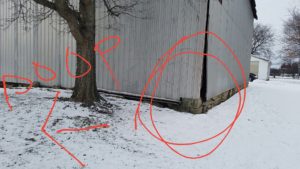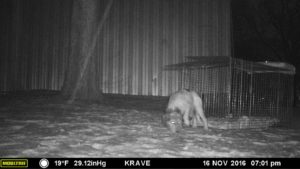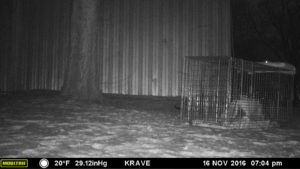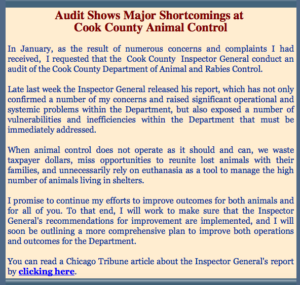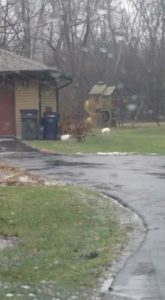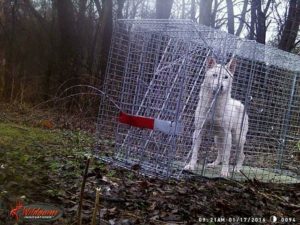Monthly Archives: January 2017
Why is Cook County Animal and Rabies Control a Secret?
 Two years ago, Cook County Commissioner John Fritchey requested an audit by its Inspector General of Cook County Animal and Rabies Control (CCARC). Eight months later on August 21, 2014, Cook County Inspector General Pat Blanchard presented the summary of Operational Review of the Department of CCACC. This was just a 15-page summary of an 80 page report.
Two years ago, Cook County Commissioner John Fritchey requested an audit by its Inspector General of Cook County Animal and Rabies Control (CCARC). Eight months later on August 21, 2014, Cook County Inspector General Pat Blanchard presented the summary of Operational Review of the Department of CCACC. This was just a 15-page summary of an 80 page report.
On September 25, 2015, Lost Dogs Illinois’s (LDI) director filed a Freedom of Information Act (FOIA) request to the President of the Cook County Board and the office of the Cook County Inspector General (IG) to receive the full and complete Operational Review of the CCARC from which the summary was prepared. The LDI Director was denied the full and complete report by the Inspector General’s office. The President’s office said they did not have the complete report in their possession. The LDI Director then filed for a review of the denial to the Attorney General’s Public Access Officer. The Public Access Officer upheld the denial.
On December 8, 2015, the LDI Director along with a LDI adviser, met with Martha Martenez, Cook County’s Director of Administration, who oversees the department of Cook County Animal and Rabies Control. A discussion was had concerning several issues and solutions in regard to the report.
A year after the IG released the Summary Report, the LDI Director made another FOIA request of the Cook County Board President’s Office and the Inspector General’s office to find out the outcome of all the recommendations in the report. Both sent back denials. The LDI Director then sent a request for review of the denial to the Public Access Officer who then contacted the President’s office. After several contacts, the President’s office sent the Public Access officer the 10/2015 letter that was sent to the Inspector General’s office (standard 90 day follow-up letter).
It has been two years since Commissioner John Fritchey asked for a complete study of CCARC. It took the IG department 8 months to do this operational review. Nothing has really changed.
Lost Dogs Illinois believes in change for the better for Cook County residents and their pets. As stated by our Director at the Cook County Commissioner’s Budget Committee meeting (11/3/2016) “I am not discounting the importance of rabies and public safety but I really believe it is time to reexamine the mission of this Department and reorganize CCARC to provide better services. Cook County is the 2nd largest county in the US, we should be proud to offer an efficient way for owners get their loved family members back.”
We also would to state that according to the Fiscal Year 2017 Preliminary Budget – Special Purpose Fund Outlook Cook County is showing approximately $8.6 million fund in the Special Purpose Fund. What is the purpose of the fund and how is it helping Cook County residents and their four legged family members?
If you are as concerned about this issue as we are, please contact your Cook County Commissioner. You can find out who your Commissioner is by clicking on the link below. Tell them that you want an Animal Control Department, which better serves the community and their pets.
List of Cook County Commissioners
Further reading
Where Oh Where Could My Lost Dog Be Held in Cook County
Part-2 – Where Oh Where Could My Lost Dog Be Held In Cook County
Inspector General Report Cook County Animal and Rabies Control
Action Alert – It is Now or Never
Action Alert – Cook County animal and Rabies Control
Bowser, come home – Why lost pets stay lost in Cook County – Chicago Tribune Editorial Board
Chicago Reader – Welcome to the Cook County Animal Maze
Follow-Up – Cook County Commissioner’s Budget Meeting – November 2015
Follow-up Meeting with Cook County President’s Staff
\
When Every Thing Goes Right – Capture of Leia
When a good friend and someone I have learned much from, Katie C, reached out to me to help with another loose rescue pup name Leia. I said yes. We followed our usual routine and started a group message with volunteers and the rescue. The rescue was totally engaged in doing whatever was needed and as was the foster family. This in itself helps the whole process in general. Sometimes we use the word “textbook” loosely because when helping with a lost dog anything and everything can happen. But , I do know this. There are some steps that have proven to make the journey easier. Leia went loose on a Saturday and was safely trapped by Tuesday morning
Steps taken:
- Flyer. Flyer. Flyer. (This was done immediately for Leia)
- Sightings start coming in
- Speak with callers and get better details. Leia was seen several times in yards where flyers had been given to homeowners. Guess what? They called.
- We established a good area for a feeding station and camera and trap. All the meanwhile still flyering.
- Learned and saw for our own eyes Leia in the area and actually engaging the zip tied trap baited with irrestable food. We knew she was comfortable and….
- Set and watched the trap.
- Safely trapped Leia
To say this went like clockwork is true. Flyers generated sightings. Sightings told us areas where she was. Homeowners were willing to allow us to use the tools we needed. Finally, patience and observation helped us capture Leia safely.
Thank you, Rosanne, for sharing Leia’s story.

